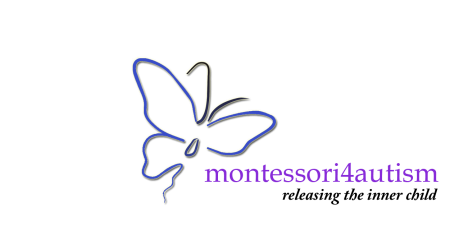Environment
Environment
Work Space.
Due to sensory imbalance, many children on the spectrum require an environment with reduced stimuli. Although such children benefit from the opportunity to change body position often and move around the classroom, they should have a quiet place to retreat, if necessary, that is not perceived as punitive.
Fine motor tasks can be challenging for ASD students, and therefore it would be advisable for students to routinely execute them at a desk rather than on the floor or couch. Fortunately, the furniture in Montessori classrooms is appropriately sized for each age group. Using a desk and chair that are optimally sized helps to develop good posture, which is important for success at fine motor activities. To reduce distraction due to sensory issues, children with ASD can use a partially inflated stadium cushion, which provides tactile/proprioceptive input. A wrapped Theraband around the chair legs (so that the child can keep stretching it with his legs) can serve a similar function. An inclined surface (created with a 2- or 4-inch binder) can also promote appropriate posture and hand position. To achieve and maintain a functional pencil grasp, students with ASD benefit from various pencil grips. Additional sensory gadgets that can make work space more functional include weighted gloves, squeezable balls, therapy putty, weighted blankets, etc.
Toys in the classroom.
Although a Montessori setting does not usually include toys, ASD children can benefit from their availability in the classroom while in Children’s House and even at Lower Elementary. Toys could be used as reinforcers and for developing imagination and play skills. Most ASD children struggle with play and often use toys non-creatively. Depending on their level of functioning, children with autism need to be taught play in a structured and gradual way – with the help of ABA programs or through various play therapies.
